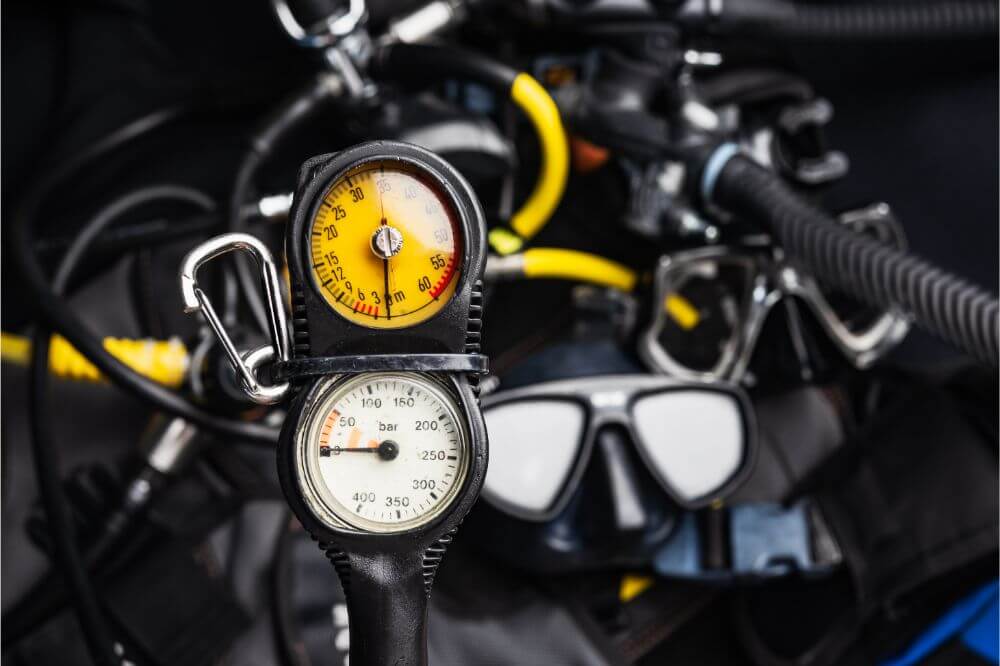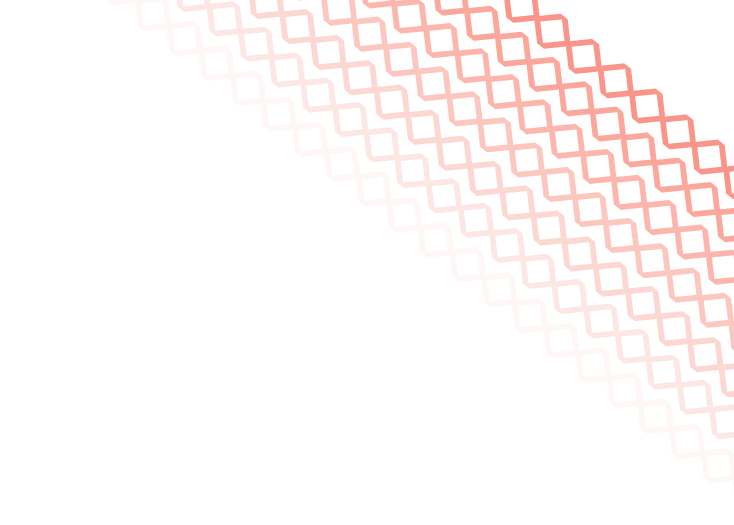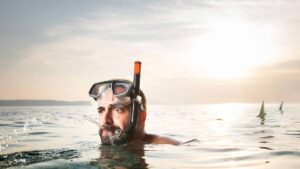One of the most critical components of scuba diving equipment you need to be familiar with is the regulator.
The regulator allows air from the scuba tank to be delivered to your lungs the way it needs to be safe to breathe.
This is often referred to as the hub of all diving equipment, as it links most of your gear into one coherent system.
For example, the regulator connects your air tank to the BCD, the pressure gauge, the alternate air source, and ultimately to you.
What is equally important to know is that two main types of regulators are available, including yoke and DIN regulators.
This is particularly important in terms of the regulator’s first stage, which we will cover below.
The bottom line is that a DIN vs. yoke regulator is not the same thing, and which you choose will affect your overall experience.
Contents
What Does a Scuba Regulator Do?
A scuba regulator (the first stage) reduces the air pressure coming out of the air tank to the point where the pressure is suitable for a scuba diver to breathe
This is a very simplistic and basic explanation, but in essence, this is what a regulator does.
As you are about to find out, a regulator assembly consists of two parts: the first and second stages.
First Stage vs. Second Stage
To be clear, the stage we are interested in today is the first stage.
The first stage connects to the tank valve, whereas the second stage is the part that a scuba diver puts their mouth, where the breathable air comes out of.
This is important because today, we are talking about the first stage, which attaches to the air tank’s valve.
This is where yoke and DIN regulators come into play.
Yoke vs. DIN – The Basics
Now that we know what scuba diving regulators are and their function, let’s talk about the two main types of first-stage regulators, DIN, and the yoke.
First off, the yoke first stage regulator is also known as the A-clamp.
This type of regulator features a clamp that gets fitted over the valve and then tightened until it is secure.
Next, the O-ring (the small circular component that helps produce a solid seal) is exposed right on the cylinder’s valve, with a pin then being screwed through the back to hold it in place, with the regulator then being pressurized when the cylinder is activated.
On the other hand, we have the DIN, which stands for Deutsche Industrie Norm (German for German Industry Standard).
Instead of clamping onto the valve, this type of first-stage regulator features a threaded opening that screws into the valve.
Instead of the O-ring being exposed on the cylinder, it is built right into the first stage, the DIN.

Yoke vs. DIN – The Main Differences
Now that we know the basics of yoke and DIN first-stage regulator assemblies let’s look at the main differences.
User Friendliness
Clamping and removing a yoke is generally considered to be a bit easier than threading a DIN.
However, besides the first 30 seconds of putting it all together being easier, this is really where the advantages of yokes over DINs end.
Profile
A DIN is generally quite a bit smaller and less heavy than a yoke.
Although the difference is not massive, every little bit of weight makes a difference.
Pressure Capacity
Although not the case 100% of the time, generally speaking, the DIN has a higher pressure capacity than a yoke, up to 300 bar.
The Seal
Because the O-ring in a DIN is directly built into it, and because this type of regulator first stage is threaded, it produces a better and tighter seal.
Cold Water Diving
If you are diving in very cold waters, it is generally accepted that the DIN is better than the yoke.
World Location
If you plan on diving exclusively in North America and Australia, you might want to consider using a yoke, as this is the most widely used type in these areas; most gear will be compatible with a yoke regulator.
Wrapping Up
The bottom line is that, in general, DIN first stage regulators are the better option.
That said, this depends on where you plan on diving, as most places in North America and Australia use the yoke as the standard.
For more information on finding a regulator for your diving, check out our list of the best scuba regulators.





